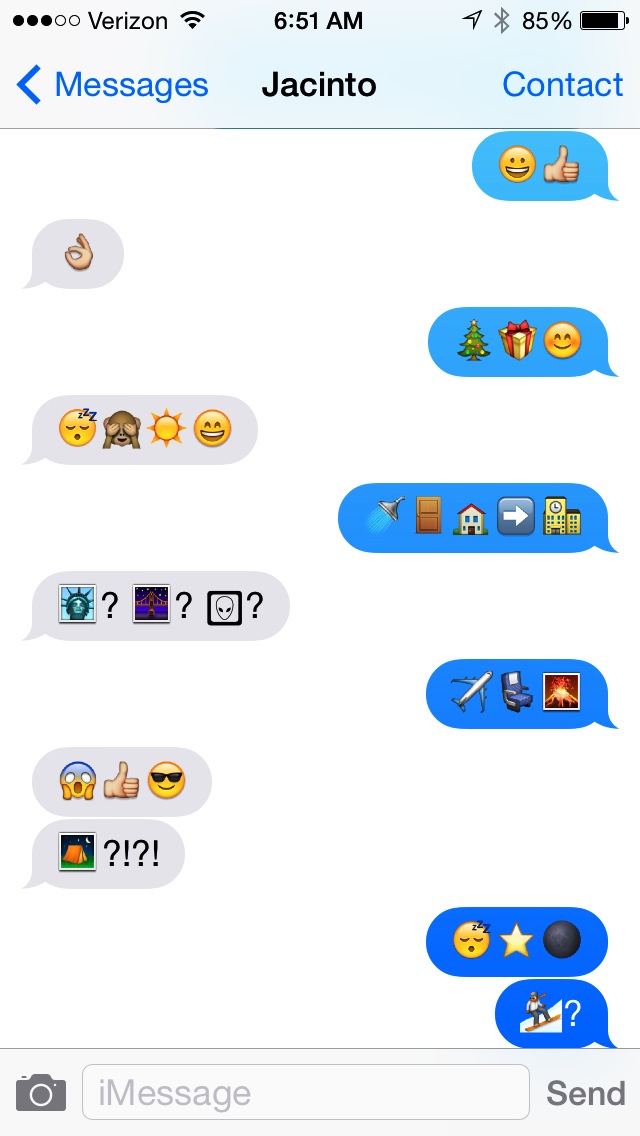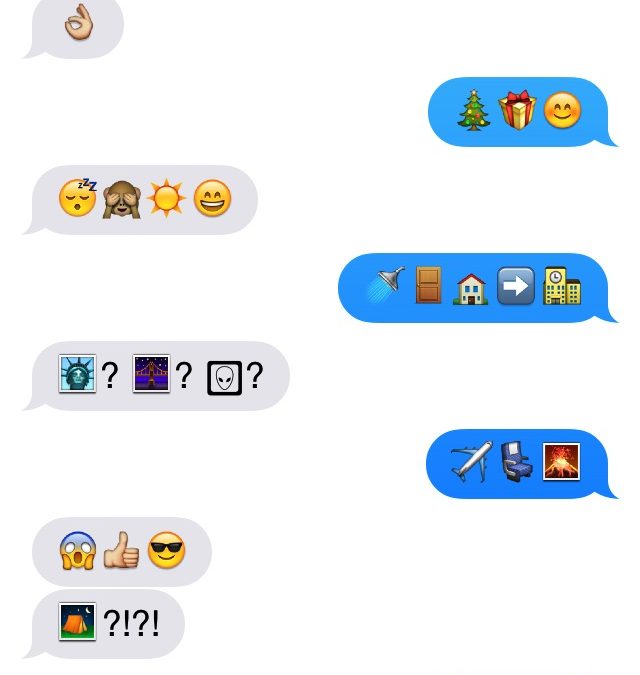*An interpersonal communication activity*
Interpersonal communication is the hardest skill for our students to gain confidence. How can we better prepare students to have meaningful interactions in the target language?
“Emoticons” or those little images have been part of our student’s texting conversations for some time now. Then, it struck me, why not use these fun little symbols in our classrooms?
The idea is to transfer the usage of the “emoticon” into a conversational activity for our second language-learning students. If you try this activity and have other suggestions, please share below!
- Bravely find a volunteer to assist you and have an emoticon-only conversation or use a message generator tool to create your own.
- Take a screen shot of your conversation an email it to yourself.

- Display for students to view. Ask questions about what the different pictures mean in the target language. For example, point to the happy expression: ¿Está feliz or está triste? Allow some time for creative brainstorming, no note taking needed though! A true interpersonal communicative activity means students use what they can, based on the input acquired.
- Students pair up, at their desks or in a circle/line formation, to have their own emoticon translation conversation.
- Students rotate to a new partner, same image displayed, more creative output occurs.
- After a fair amount of rotations, display a “key” of emoticons for the class to see. (http://www.iemoji.com/ or http://www.secret-emoticons.com/twitter-emoticons )
- Have students message one another using only the emoticons. Have one student take a screen shot of their conversation and post to the classroom learning management system or share with you via email. *If there is no technology on hand to use, have students pass back & forth a 5×7 index card and draw the emoticons they would like to communicate with.
- Using the newly student created emoticon conversations, continue the next day by having students use each other’s conversations to spark some creative interpersonal conversations. You can also follow this up by having students create a story using the emoticon conversation as their spring board- what will happen next? 🙂







That’s a great creativity-enhancing activity, I will most certainly try it. Thanks for the idea!